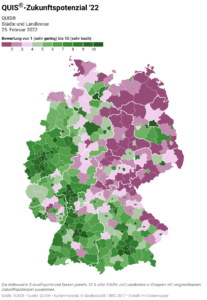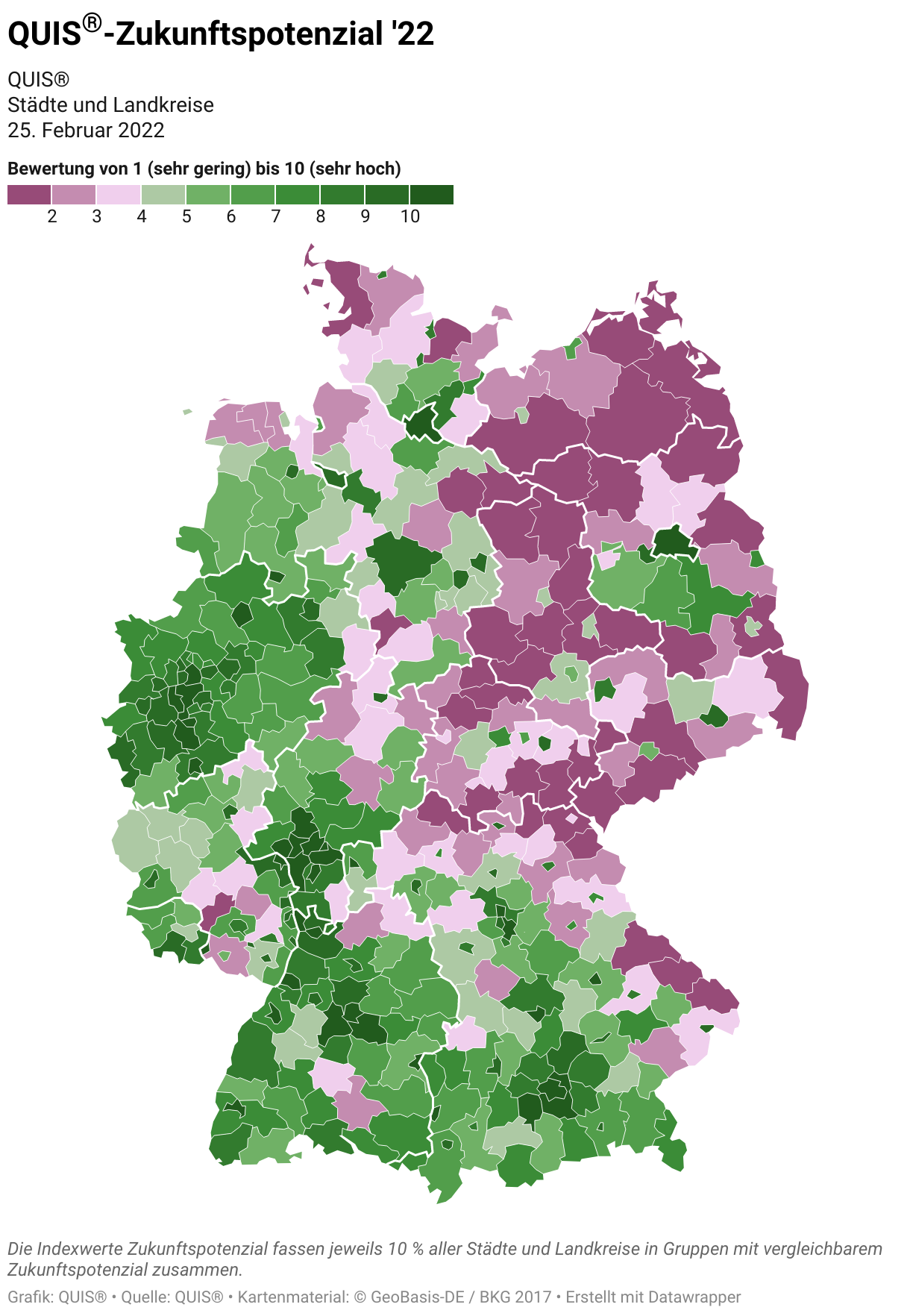Once again, Ulm comes out on top in a ranking: in a study, the Hamburg-based company Quis evaluated the future potential of all 401 German cities and districts. Ulm came in eleventh place.
The study focuses on the categories of economic and financial strength, quality of education as well as innovative strength, internationality and accessibility. The ranking determined is based on an evaluation system that examines a total of 13 indicators. The target group of the study includes real estate investors in particular, who are to be given an indicator of the attractiveness of a location.
For each city and district, the future potential is shown on a rating scale from high (10 points) to low (1 point). Accordingly, the cities and districts are divided into ten assessment groups and can be compared with each other again on the basis of the relative position strength (ranking). The cities and districts with a high future potential (10 points) occupy the top rankings 1 to 33.
As can be seen from the survey, the city district of Ulm has improved by seven places compared to the previous year. It moved up in the top group to 11th place (previous year: 18th place), also with an unchanged 10 points, and is thus on the verge of making it into the top 10. In accordance with its relative positional strength (rank), the future potential of the small city of Ulm is rated better than that of the metropolis of Berlin. A positive aspect for Ulm is above all the high proportion of people under 25 in the labour force (youth quotient). Ulm is therefore young or younger than Berlin and is becoming younger, despite the contrary demographic trend. Compared to Berlin, Ulm also has more foreign employees in percentage terms and a higher commuter balance. The city district of Ulm already stood out as a hidden champion in the previous year’s study.
Source: https://quis.de/

